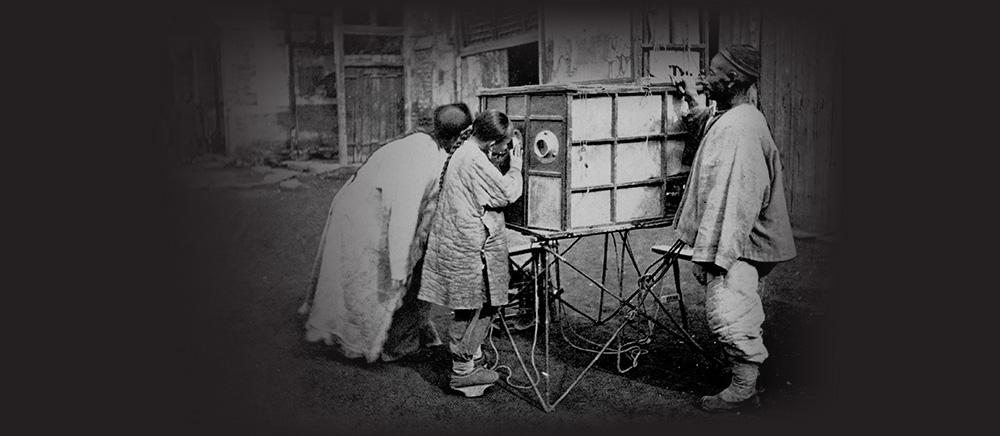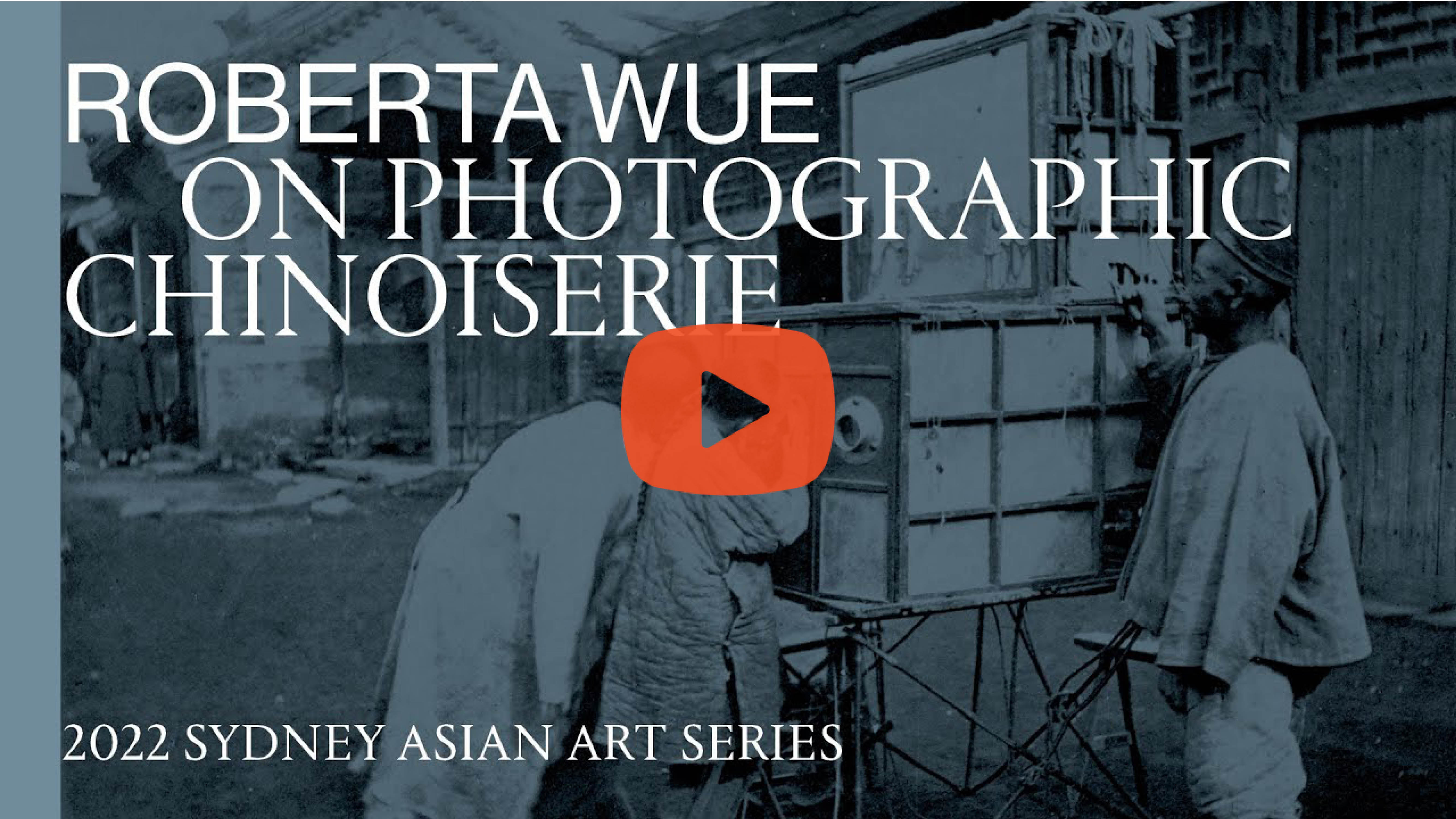Photographic Chinoiserie: John Thomson and the Chinese Export Image

Can China and the Chinese be encapsulated in an image?
Image: John Thomson, “Peking Peep Show,” from Illustrations of China and Its People, (London: Sampson Low, Marston, Low, and Searle, 1874), vol. 4, plate 27.
Can China and the Chinese be encapsulated in an image? The photographer John Thomson (1837-1921) appears to answer this question with the first photographic book on China, his monumental Illustrations of China and Its People (1873-74). Relying on intertwined texts and images, Thomson’s book represents China through his authority as traveler, guide, and expert, and by employing quasi-scientific systems of information such as ethnography and geography. However, understanding Thomson’s work as vehicles of information alone, omits its relationship with longstanding visual discourses around ideas of China. It is generally accepted that Chinese export art served as an important predecessor to early China photography yet how do chinoiserie fantasies make their way into Thomson’s photography and his “documentary” ways? This talk will address the Scottish photographer’s engagement with Chinese trade art and its producers, and his own desires to imitate, reproduce, and enter this fictive world. In grappling with ideas of China, how does Thomson connect photography to the Chinese export image?
People

Roberta Wue
Roberta Wue is associate professor of Art History at the University of California, Irvine. She has published on painting, photography, print culture, and advertising in modern China. She is author of Art Worlds: Artists, Images, and Audiences in Late Nineteenth-Century Shanghai (Hong Kong University Press, 2014) and co-editor with Luke Gartlan of Portraiture and Early Studio Photography in China and Japan (Ashgate/Routledge, 2017). Most recently she is interested in serial images (such as comics), drawing, and the book format in Republican-era China.

